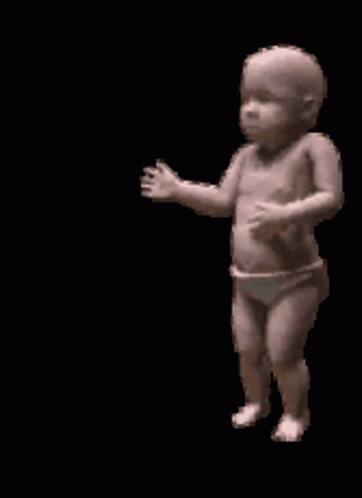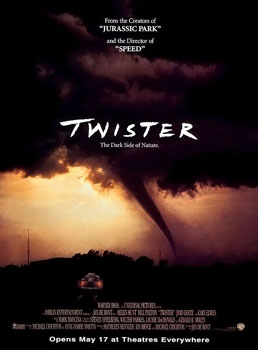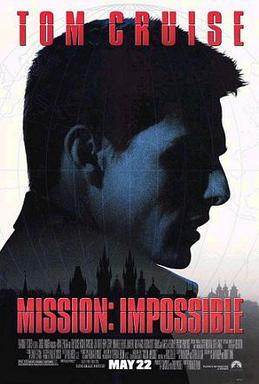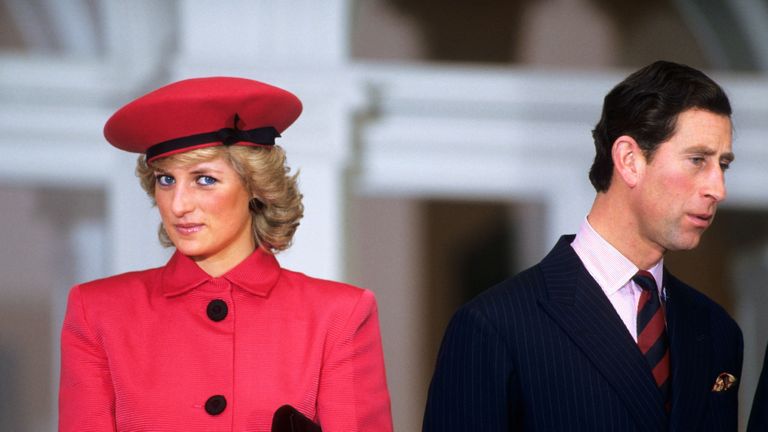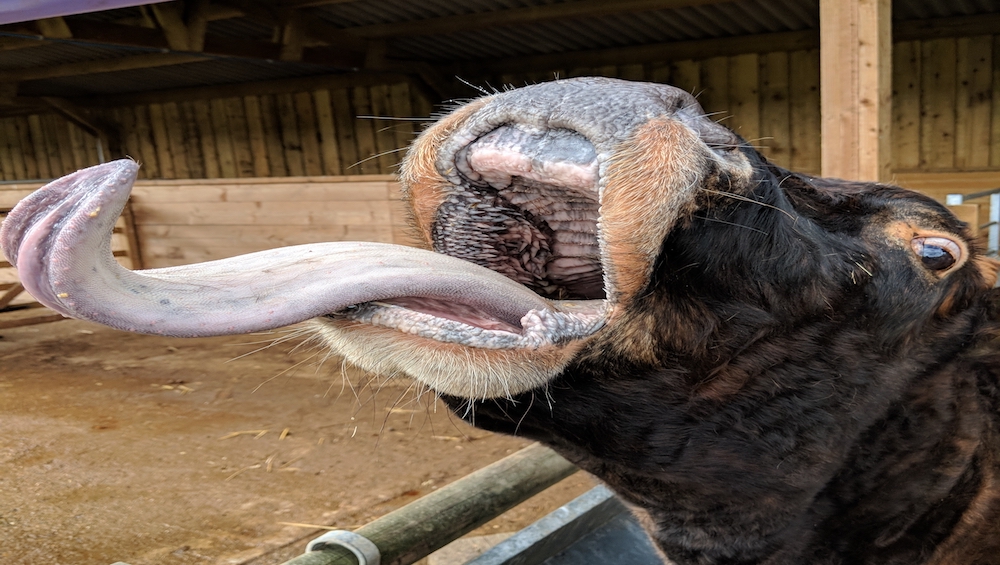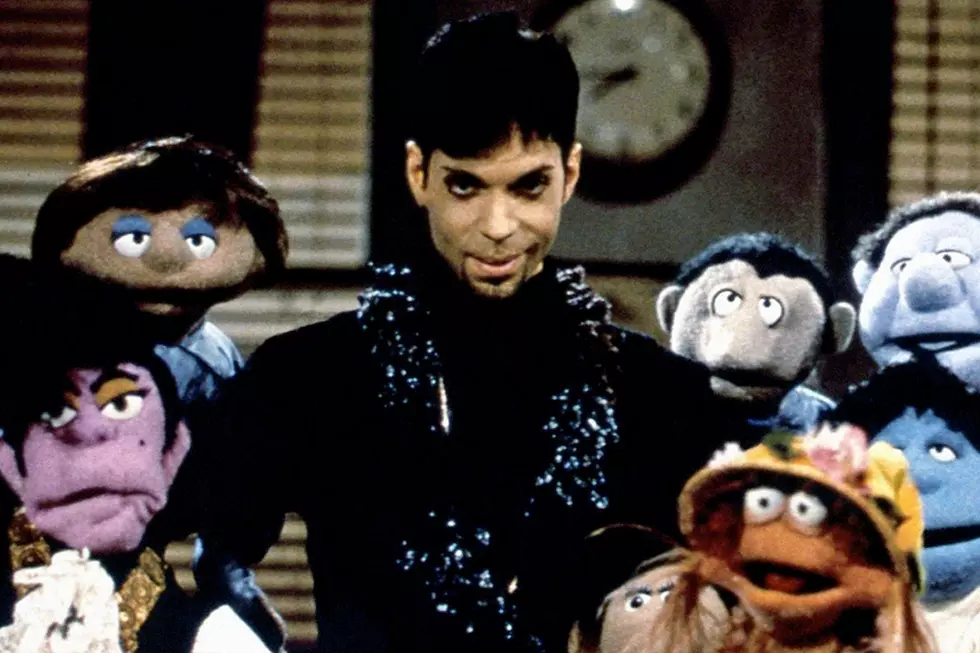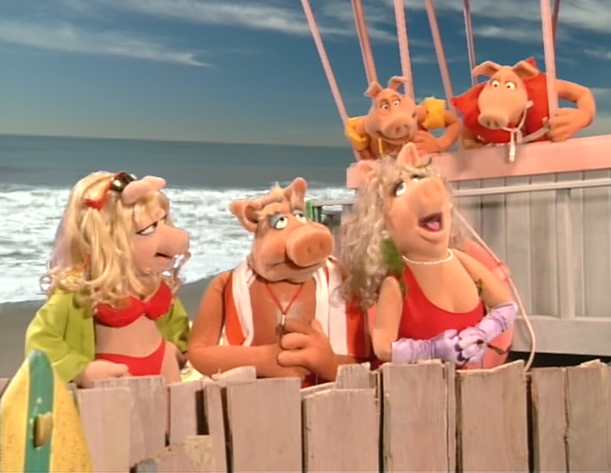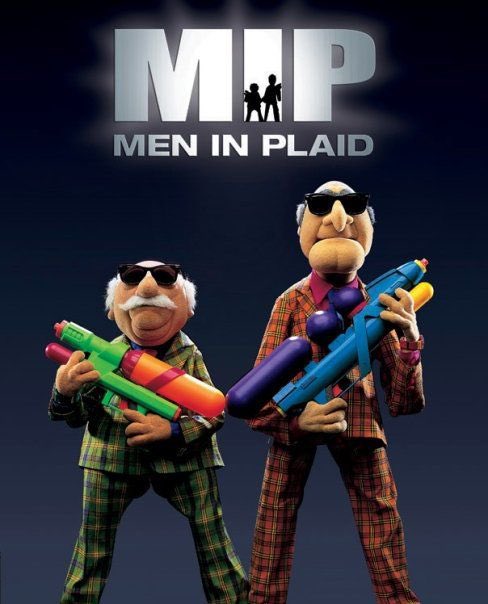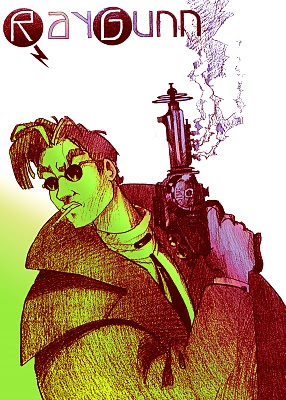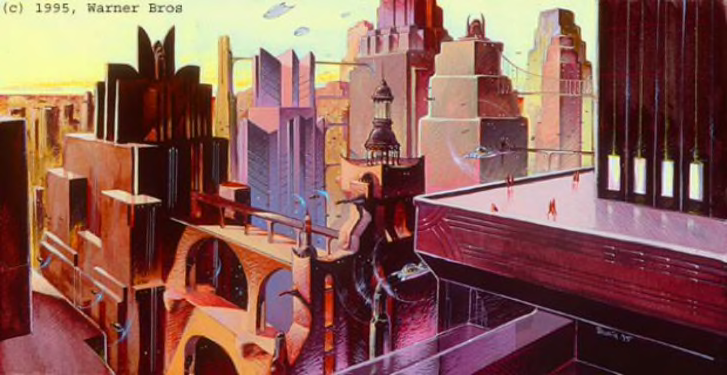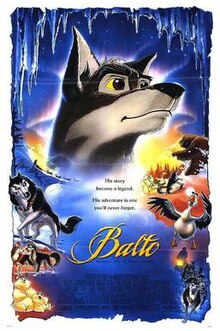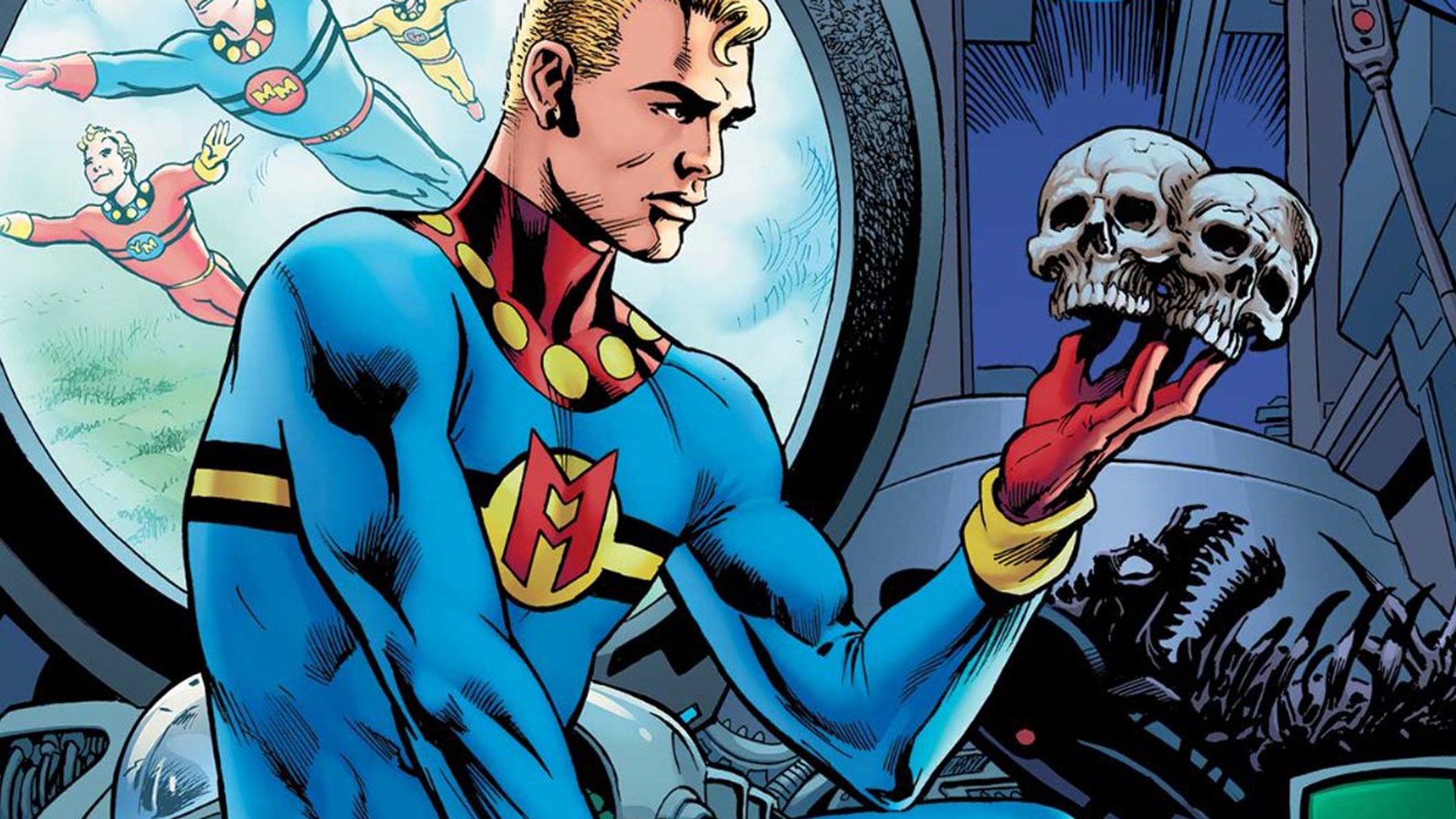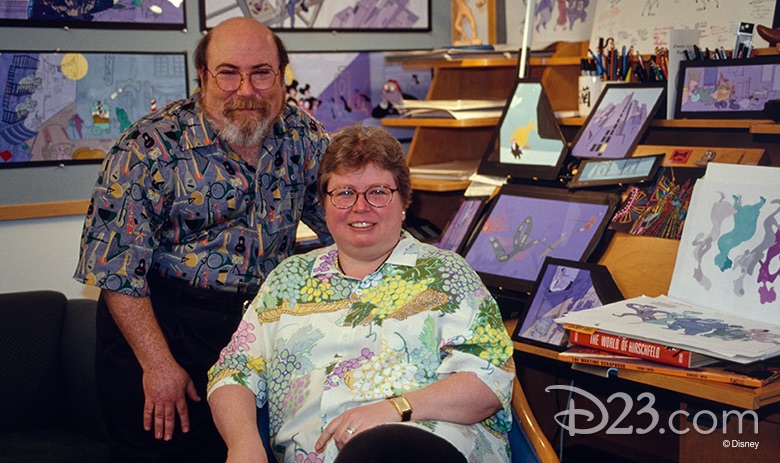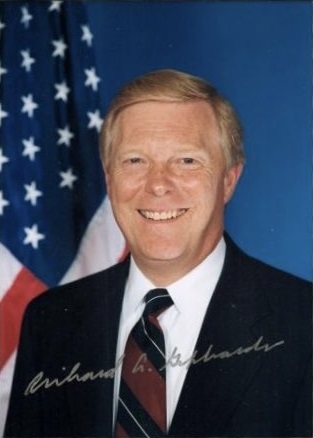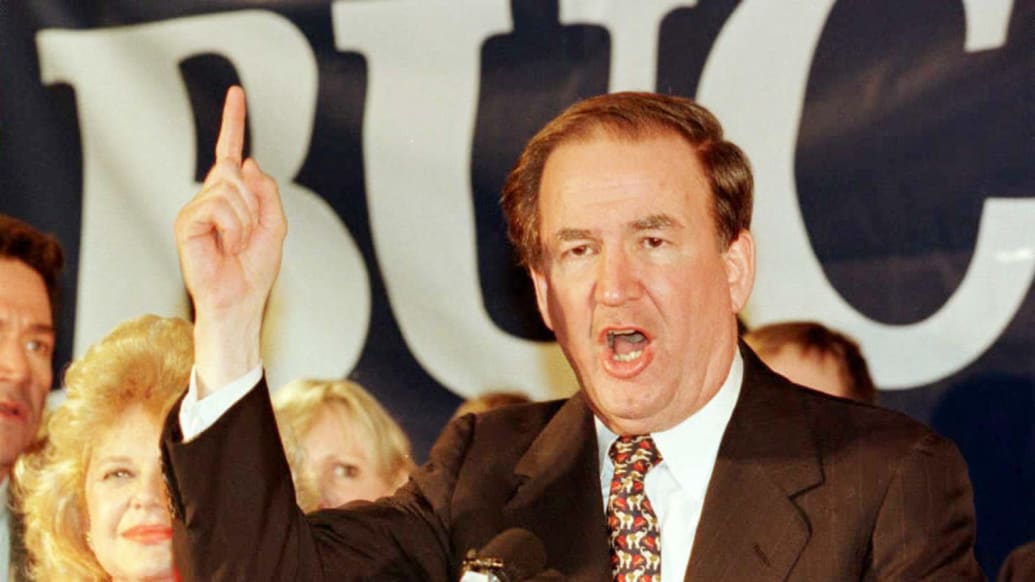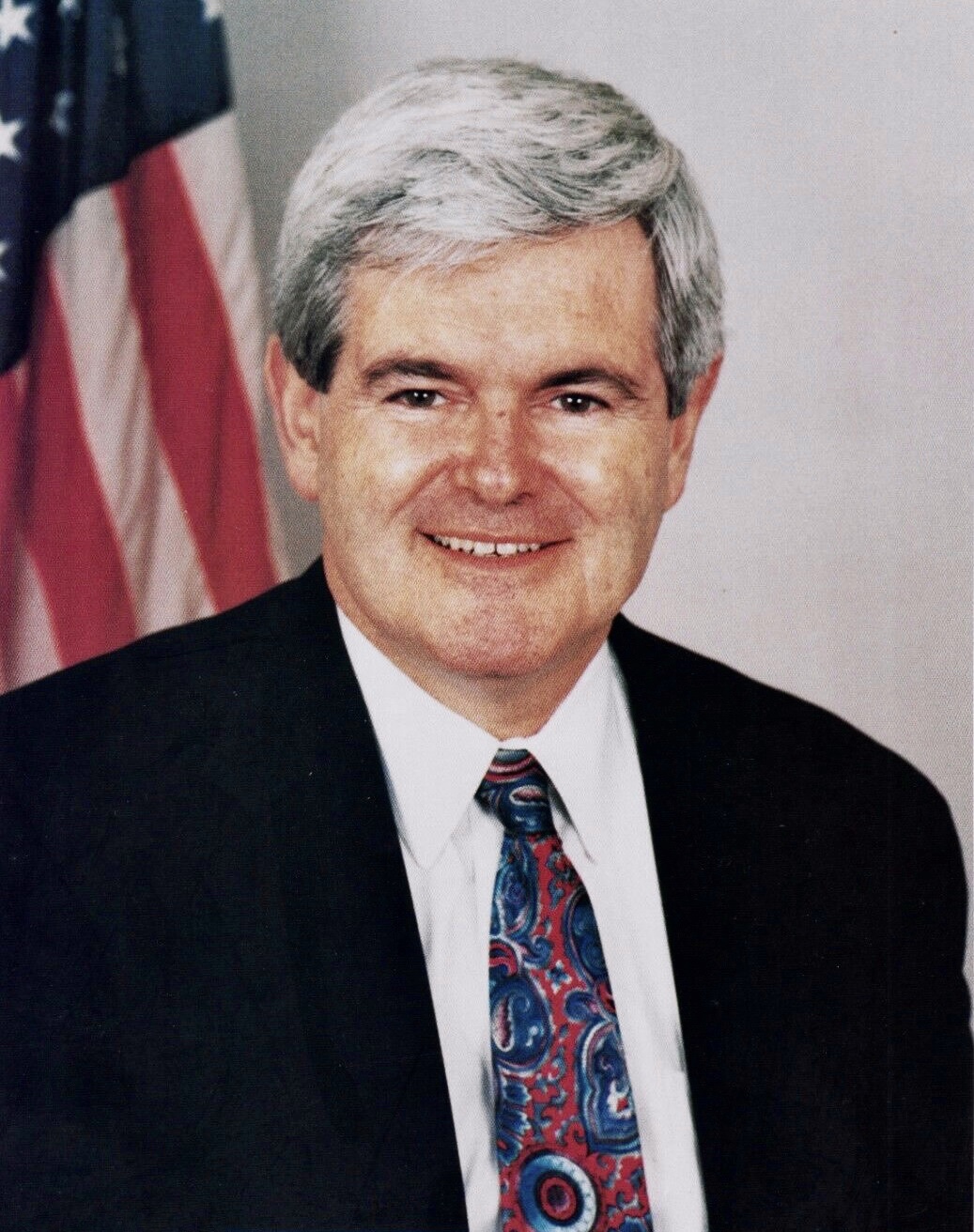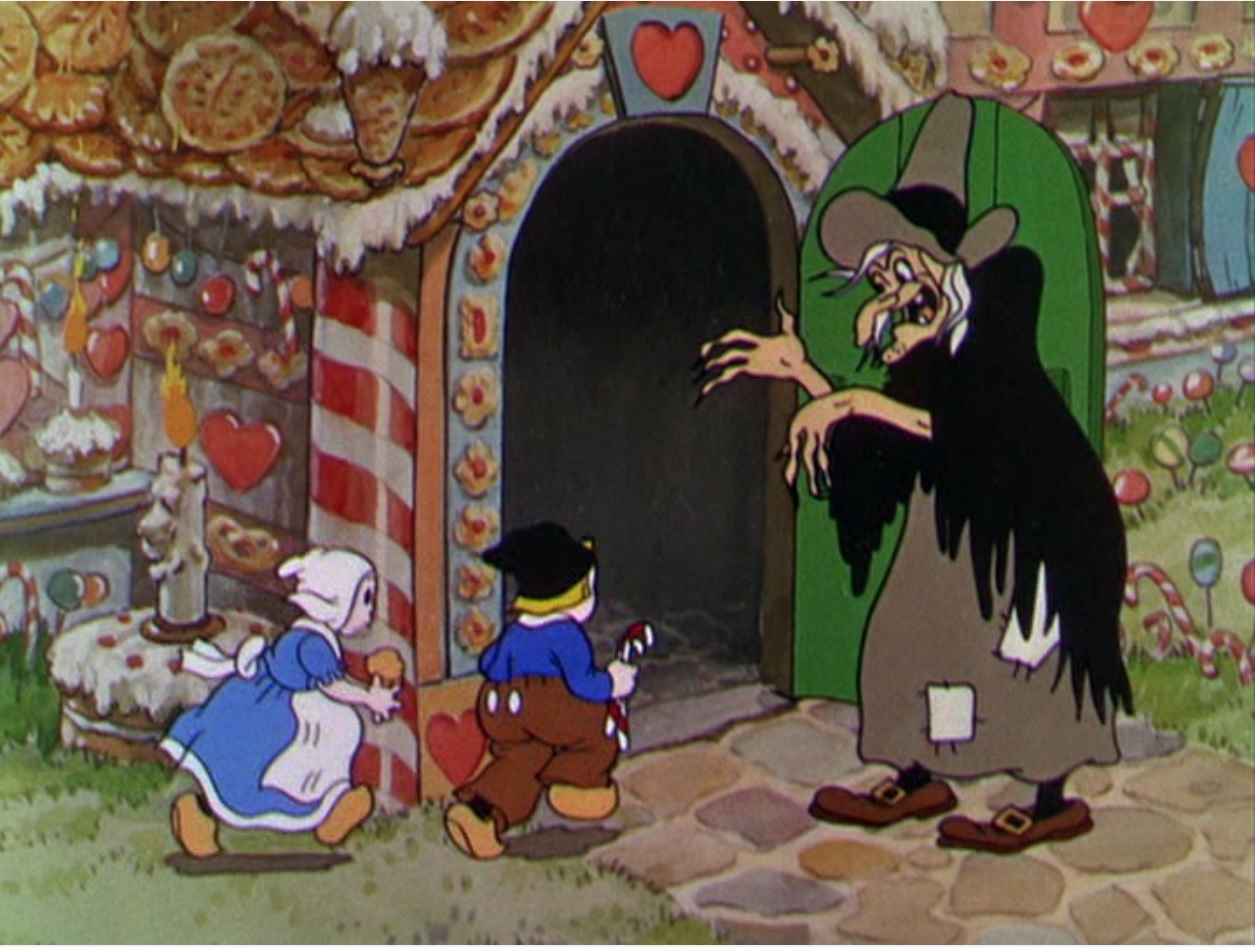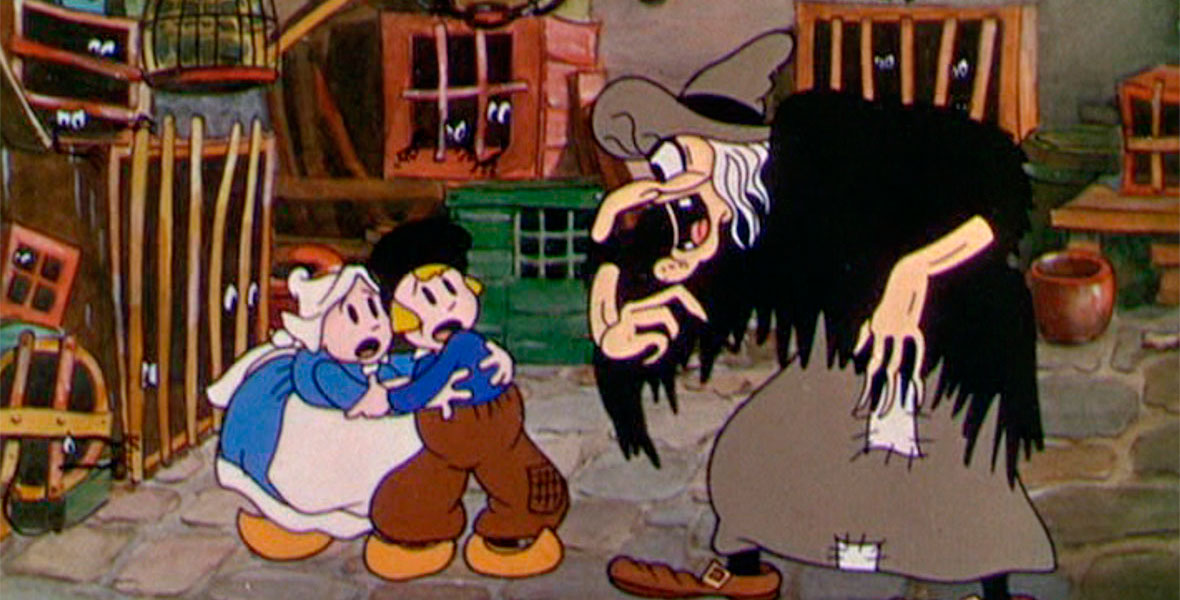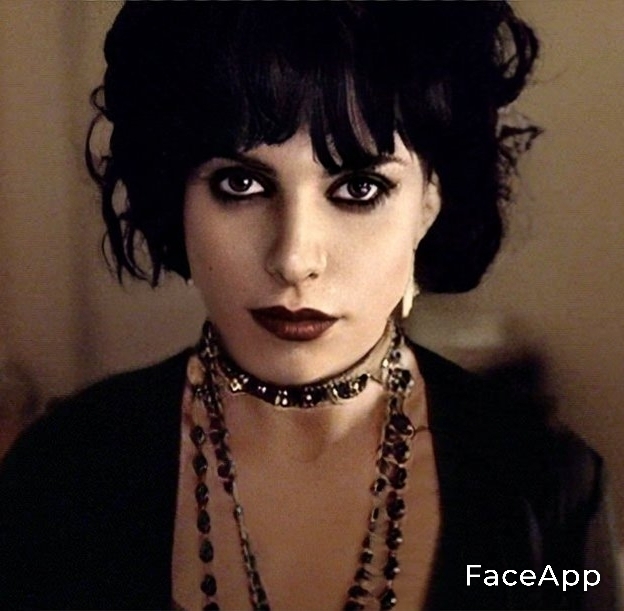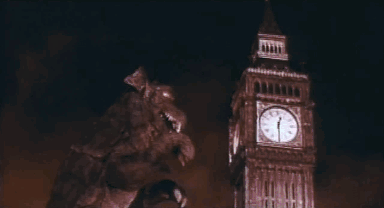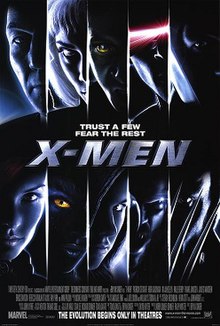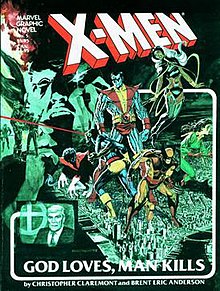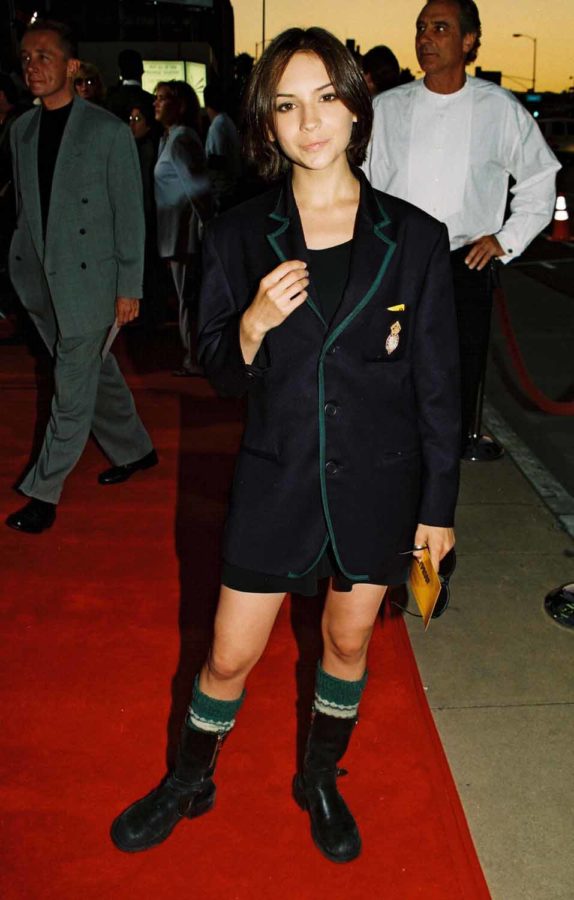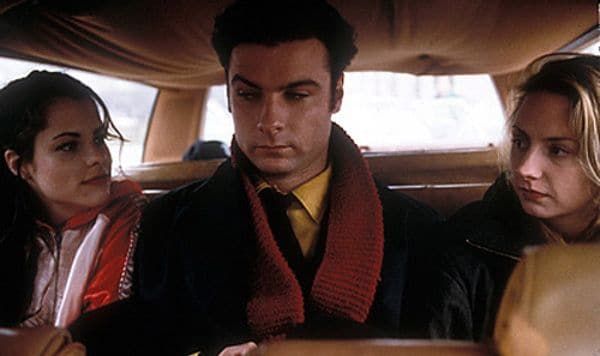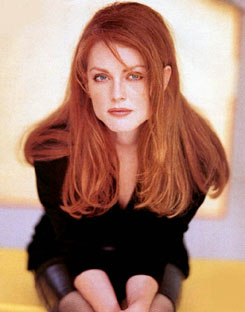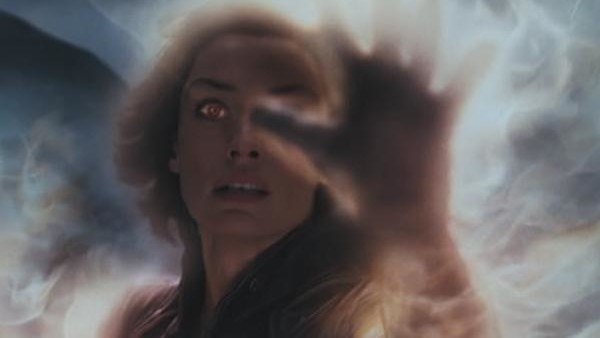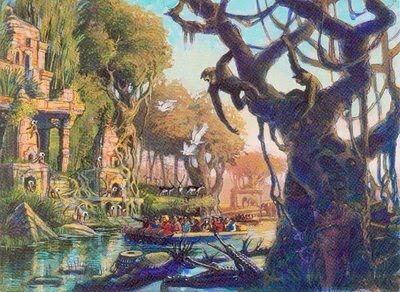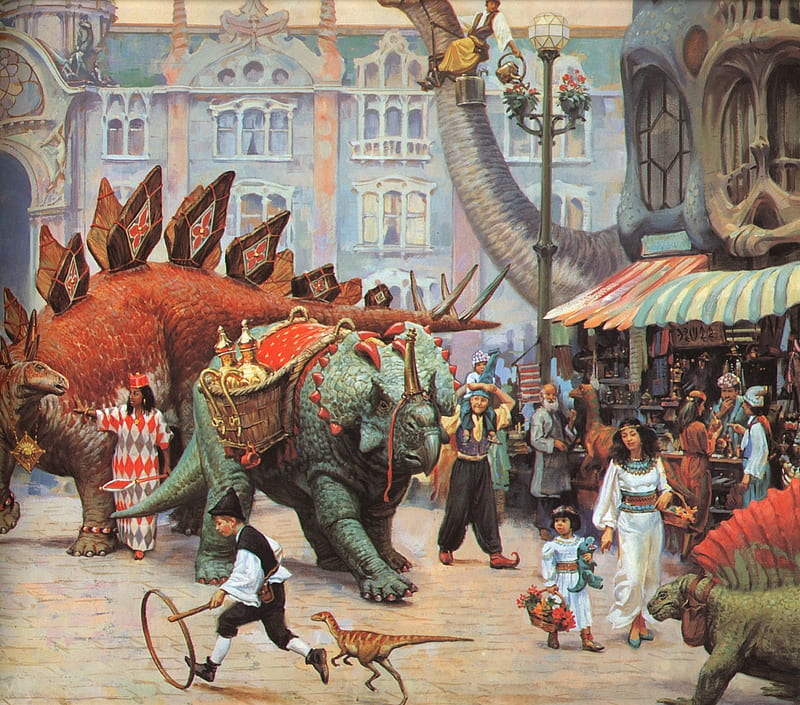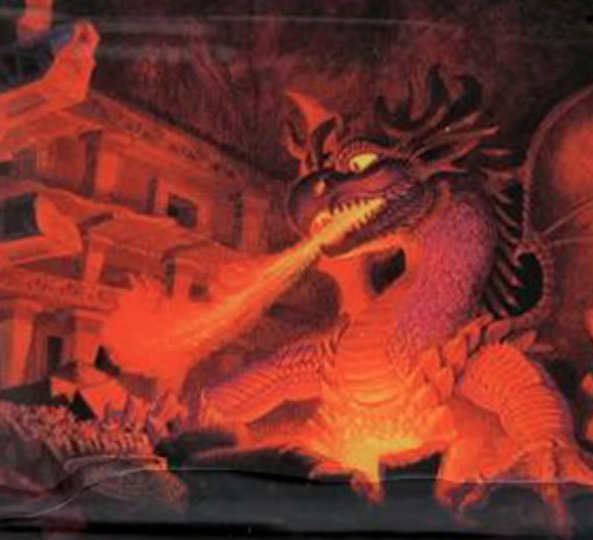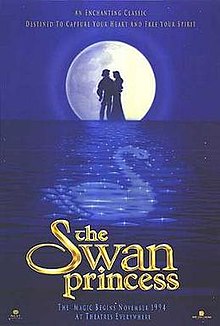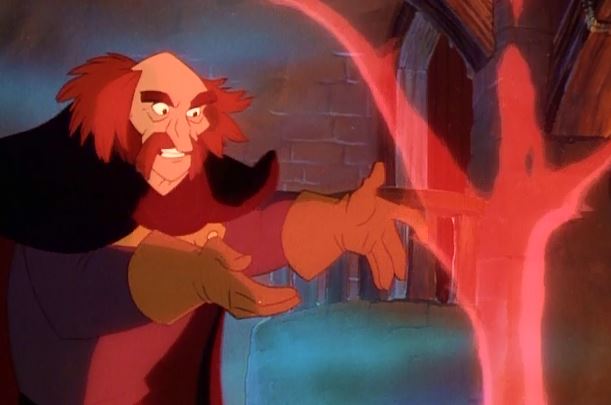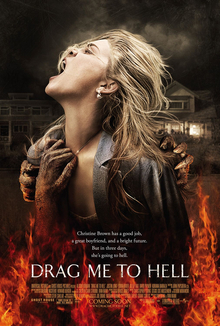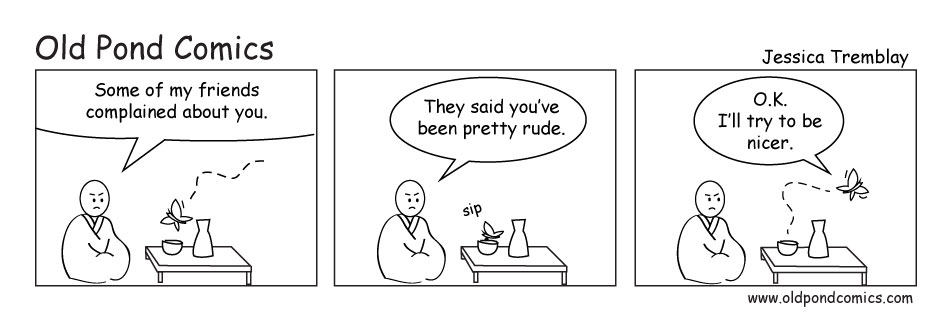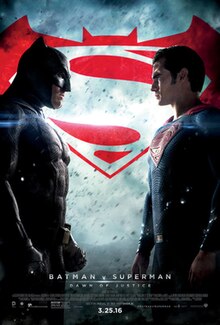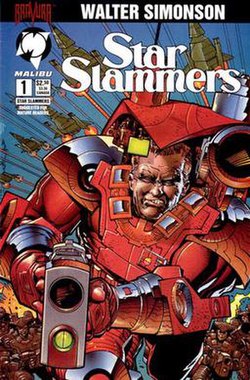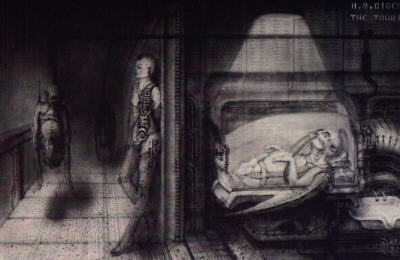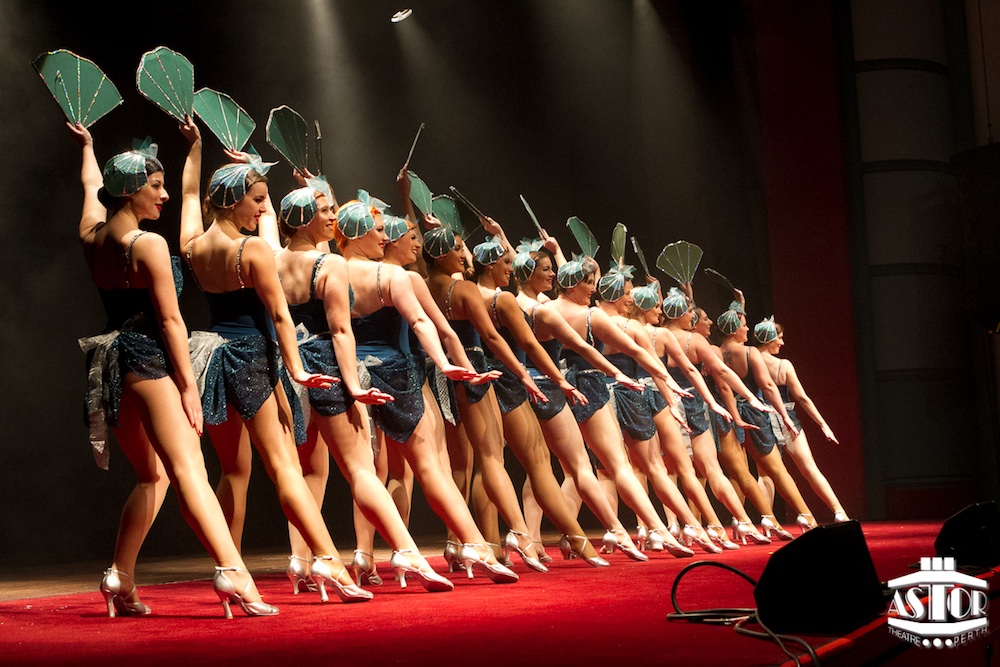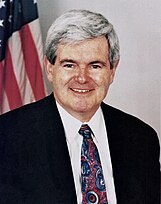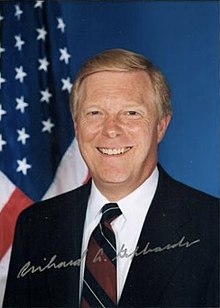New York Times Short Movie Reviews, 1996
The Voodoo that You Do so Well, Mr. Bond
Ralph Feines returns as Agent 007 in this follow-up to 1994’s
Casino Royale. Following in its period reboot formula,
To Live and Let Die is a world away from the 1973 Roger Moore film of the same name in both story and style, tracking closely to the original Ian Flemming book. This choice will ironically remind Bond film fans a lot of certain parts of 1981’s
For Your Eyes Only, which were taken from the
To Live and Let Die novel. In fact, probably the biggest deviations from the book are in the portrayal of voodoo and Black Caribbeans, which are both presented with a more nuanced and humanizing touch that’s a blissful step away from the original exploitational portrayals by Mr. Flemming (though some may miss Geoffrey Holder’s scene-stealing Baron Samedi from the earlier production).
Also addressed are the racist assumptions of the time (the film, like the book, takes place in 1954), even as expressed by Mr. Bond himself, who learns a level of respect and understanding in this telling. Balanced carefully between the nuance of the sociopolitical story and the brutally naturalistic action scenes, this film is a treat, with Feines’ masterful and transcendent acting playing well against the enchanting Halle Berry as love interest Solitaire, James Spader as CIA agent Felix Leitner, and Delroy Lindo as the villainous Mr. Big. And Pete Postlethwaite, it hardly needs to be said, returns as M. While
To Live and Let Die may not have quite the air of “event” around it that its predecessor did, it is nonetheless a solid and enjoyable Bond film in its own right, a good follow-up to 1994’s
Casino Royale, and should satisfy Bond fans and casual moviegoers alike[1].
To Live and Let Die, Rated T for action, adult language, and adult situations, ⭐⭐⭐
Heart of Lightness
After 1994’s literally explosive mega-budget
Star Trek: Point of No Return, two things seem to have become apparent to Paramount: 1) that something lighter and more whimsical was called for, and 2) that something significantly lower budget was needed. Thus we get
Star Trek: Timeless, a whimsical story of Riker and crew travelling “up” a strange temporal disturbance called The Briar Patch to find a mystical “lost colony” led by Riker’s “twin” Tom Riker (actually the result of a transporter accident) where the deaging power of the temporal anomaly has led to a strange utopian Immortality Spa. Quoting Conrad’s
Heart of Darkness, but as a lighthearted comedy, the Next Generation Crew team up with the Envoy crew to navigate The Briar Patch to where Tom Riker lives as a whimsical Kurtz leading a team of scheeming but bumbling Ferengi (in particular Jason Alexander’s Harlequin-like Brurg) that have all “gone native” alongside some mystical alien locals called the Va’ana who seem to live in a state of temporal flux. The crews must deal with a conspiracy by Tom Riker and the Ferengi to “steal” the youth-giving powers of the temporal anomaly in order to “bottle and sell it” in a play on the Fountain of Youth legend and as a satire of human vanity and the commercial exploitation thereof.
Director Jonathan Frakes seems to be having the time of his life playing opposite to himself as the noble Commodore William Riker and his scheming “brother” Tom, whom he must steer away from his “long con” against the Va’ana and back into the fold of the Prime Directive, particularly once the awkward “side effects” of the “bottled” youth potion are revealed. The Riker V. Riker plot may seem like a Frakes ego trip waiting to happen, but writer Michael Piller gives the two a brilliant spin as a literal reflection of the two sides of Riker and by extension the two sides of humanity. It’s the lightest and most humorous Trek film since
Star Trek IV, giving Robert Englund’s Data a chance to show his comedy chops and Rosalind Chao’s tough-as-nails Tasha Yar a chance to indulge in a little girly vanity with Sam Smith’s Leslie Crusher, who in turn is terrified that she’s “turning back into a teenager”. And yet it still manages to ask some profound questions about human short term greed and the exploitive nature of colonialism. It’s a big change from the last Trek outing for sure, but I for one found it enjoyable[2].
Not really this…
Star Trek: Timeless, Rated T for action, adult language, and adult situations, ⭐⭐⭐
Creepy Crawlies
They did Cyborg Soldiers in ’92. They did Egyptian Aliens in ’94. And now director Roland Emmerich and producer Dean Devlin team up to bring us spiders. Lots and lots and lots of spiders, from hoards of tiny killers to a stadium-sized monster. Ugg! The fittingly-named
Arachnophobia was a script that had been bouncing around Hollywood for a while. At one point Steven Spielberg was attached to it. But when Warner Brothers picked it up in turnaround, new WB President John Peters handed it to Emmerich, who’d been struggling to come up with a new idea for a follow-up to 1994’s
Gateway[3]. With Devlin and Emmerich taking a spin with the original Don Jakoby script, and adding in the giant spider at the end (reportedly at the insistence of Peters), the results were far larger in scope than Jakoby originally envisioned, with the resulting film starting as a modern take on
Kingdom of the Spiders and then evolving into
Godzilla by the end. Starring Jeff Goldblum and Randy Quaid[4], this is an old-fashioned matinee creature-feature with the scale and scope of a summer blockbuster. The writing is corny and cliched, and full of silly one-liners, sometimes multiple one-liners back-to-back[5], making you wonder if this is a subtle parody of action blockbusters in disguise, or just an accidental self-parody. Either way, it works for what it is, which is pure popcorn fare. This isn’t a movie that insults your intelligence as much as one that kindly asks you to leave it at the door.
This by Roland Emmerich!
Arachnophobia, Rated T for action, horror tropes, adult language, and adult situations, ⭐⭐
Show Me the Money
Up-and-coming director Cameron Crowe of
Say Anything and
Triple Play fame wows us again with
Game, a heartfelt emotional rollercoaster following the life of a superstar sports agent and pulled from the headlines. Super-agent Jerry Stein (Jeff Goldblum) is a talented but conflicted sports agent at a major agency who makes waves, gets fired, strikes out on his own, signs the biggest name in football (Tupac Shakur’s Tyree Spiner), rekindles a fragmenting relationship with the love of his life (Renée Zellweger’s Dorothy Farrell), and helps rally the city of Los Angeles to save the LA Rams from a move to St. Louis[6]. Released by Hyperion, but clearly tied in with the Disney side of the company, the story takes clear inspiration from super-agent Leigh Steinberg and his battle with his former agency and fight to save the LA Rams. And while the actual events of the story, from the “open letter” that got him fired (allegedly inspired by Jeff Katzenberg’s leaked memo at ABC) to the unlikely signing of Spiner to the triumphant deal between Disney CEO Ron Miller and Georgia Frontier (as themselves with a further cameo by Jim Henson), are all exciting in their own right, it’s really Goldblum’s unflappable charisma as the calm and slightly befuddled face at the center of the hurricane and his excellent chemistry with Shakur and Zellweger that keeps you invested[7]. While the story might have benefitted from a tighter focus, say just the Rams deal or the Spiner deal, in all it’s a wonderful underdog story with the affectionate subjective direction for which Cameron is proving to be an emerging master.

Basically this, but touched by butterflies
Game, Rated R for language, adult situations, nudity, sex, and substance use, ⭐⭐⭐½
Flight of Dragons
Fox Films once again brings us dragons (and lots of them) in the aptly-named
Dragonflight by director James Cameron. While unrelated to 1994’s
Dragonheart (this film is adapted from the
Dragonriders of Pern series by Anne McCaffrey), this spiritual sequel takes us to the land of Pern, a fantasy realm where an elite group of men and women and their psychically-linked dragon steeds exist to protect all life on the planet from a deadly alien substance known as the Thread. But the Thread hasn’t appeared in centuries and is practically a legend, and many of Pern’s wealthiest citizens are starting to wonder why so many resources are going to these elite riders when the resources could, they say, be better used elsewhere (particularly in their own vaults). By this point only one “Weyr” of dragons remains, and if the prophesies are true, the Thread will soon return and this single Weyr will not be enough to protect the planet from extinction. The story follows Leesa (Winona Ryder), the last of a once-mighty family murdered by usurpers, who must convince the people of Pern that the Thread is real, and that drastic steps must be taken immediately if they are to protect the planet. What unfolds is a tale of passion, intrigue, plot, and suspense as Leesa and her beau F’lar (Brad Pitt) must unite the people of Pern to overcome the machinations of self-serving aristocrats and powerful financial interests with a vested interest in covering up the threat posed by the Thread in what unfolds through Cameron as a metaphor for the fight against global warming. While the plot is convoluted, stuffing several novellas of information into a single story, and the film itself a bit of an overwrought melodrama at times, Cameron’s dynamic direction, brilliant effects by the Creatureworks, and great acting make for an engaging visual treat[8].
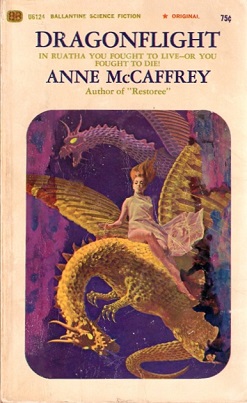
Dragonflight, Rated T for action, adult language, and adult situations, ⭐⭐⭐
Fun, but Hardly Super
Superman returns, and this time he brings Batman (now played by William Baldwin) and Wonder Woman (Catherine Zeta-Jones) with him in this obvious set-up for the long-rumored crossover
Justice League film. And while the action is crisp and the effects great, a convoluted plot involving Lex Luthor (Patrick Stewart), Braniac (Dennis Haysbert), and a criminal mastermind known as Ra's al Ghul (Jason Isaacs), along with shady businessman Roman Mars (William Forsythe), who is in truth the god Ares, keeps the film from attaining the heights that it could. Plot excuses to get our heroes to fight each other come across as contrived (though the actual action scenes are fantastic). The dialog, the result of a rumored ten rewrites from a half-dozen hands, lacks that punch from the earlier DC films and is full of orphaned set-ups, with even Superman actor Robert Downy Jr’s famous quips falling flat.
And while Robert Downy Jr’s legal troubles and substance abuse may be dominating the tabloids, the real effects of addiction appear to be taking their toll as Downy phones in his performance and seems to lose focus on more than one occasion. Rumors persist of a deeply troubled production with absentee actors and executive interference and competing cuts that have director Michael Mann swearing that he’ll never work for Warner Brothers again. Could all of these rumored issues be the reason why little in this film seems to come together? Either way, the film somehow does manage to just squeak by as popcorn fare based on the action and effects[9]. We can only hope that they pull it all together in time for the now seemingly inevitable
Justice League.
Has shades of this…
Superman: Champion of Justice, Rated PG for action, adult language, and adult situations, ⭐⭐
The Curse of the Pharaohs
Director David Fincher takes up the Universal Monster Renaissance baton with
The Mummy, and brings his dark, eccentric eye to the story of cursed Egyptian sorcerer Imhotep (a commanding performance by Daniel Day-Lewis) who has returned to life and is seeking power and revenge. Based in part on the 1932 original with Boris Karloff, Fincher’s dark take, set in the 1930s, is a tale of conspiracy, madness, and greed as ne’er-do-well Egyptologist Dr. Edvard Muller (Armin Mueller-Stahl) inadvertently unleashes the supernatural horror of Imhotep, who soon, using the power of his magic to disguise his hideous true form, insinuates himself into European high society as the wealthy importer Ardeth Bey in a dark scheme to retake earthly power in the “modern” 1930s world.
But the discovery of Helena Bonham Carter’s Helen Grosvenor, who bears an uncanny resemblance to his lost love, the Princess Ankh-amun, soon distracts Imhotep from his dark path to power. And only the seemingly insane Frank Whemple (Johnny Depp) sees the whole truth and can expose Imhotep for what he is. Corporate greed, Nazi occultism, political conspiracy, and foul sorcery blend into a twisting, non-linear tale full of constant swerves and paranoia where truth, reality, and perception are arguably a matter of perspective…a perspective skewed by Fincher’s subjective, misleading camera work and unreliable characters. The end result is a rollercoaster of action, drama, dark comedy, and thrills and a great accompaniment to the rest of the Universal Monster pantheon.
Definitely not this…
The Mummy, Rated R for graphic violence, horror tropes, adult language, and adult situations; ⭐⭐⭐½
Slammin’ Sci-Fi Action
Orion dives once again into the comics world, this time in an adaption of Walter Simonson’s
Star Slammers in partnership with Dark Horse Productions. Following a squad of Space Mercenaries in a future world,
Slammers is a surprisingly nuanced war film that addresses the complexities and horrors of war even as it dazzles with incredible effects courtesy of WETA Digital, the up-and-coming effects company behind
Kong: King of Skull Island. This big-budget effects film starring Bruce Willis and Jamie Foxx is rumored to have topped $70 million in costs, but the results are spectacular and director John McTiernan reminds us why he is the action movie director to beat. Whether it can go toe-to-toe with MGM’s highly anticipated
X-Men remains to be seen[10].
Slammers, Rated T for violence, action, and adult language; ⭐⭐⭐
An Alien in Manhattan, Darkly
After a very long and very troubled production, Clair Noto’s
The Tourist has finally screened. It’s a tale of Production Hell that goes back to 1980 when Noto’s bizarre script about an alien secretly living in Manhattan was first optioned by Universal, to be produced by Renee Missell and Brian Gibson, with artist H. R. Giger enlisted to provide art direction. After a year of contentious rewrites, the script went into turnaround, where Coppola picked it up for American Zoetrope, just in time for
One From the Heart to flop, taking his studio with it. Coppola held onto the rights, eventually showing it to Tim Burton while he was working with MGM on
Tucker: A Man and his Dream. Burton was intrigued, but busy, and the script ended up in the Skeleton Crew “to do” pile.
Eventually, Larry and Andy Wachowski came across the script while discussing an unrelated script with Burton’s Skeleton Crew. They fell madly in love with its dark vision and jumped to put it into production. They contacted David Lynch to potentially direct, who declined to direct but agreed to help executive produce instead. It would be Skeleton Crew collaborator Barry Sonnenfeld who would introduce them to David Cronenberg, who’d done
Adams Family Values and
Mary Shelley’s Frankenstein with him. Cronenberg was a natural choice and the film went back into active production for Fantasia Films with some script doctoring by Caroline Thompson.
And what a vision it is! The sexy Natasha Henstridge shines as the secret alien Grace Riley[11], who gets caught up in a dark conspiracy as she seeks an escape from the “backwater” planet Earth. Peter Weller is unnerving as the nefarious Frogner, who works for the violent and murderous Harry Sloane (Julian Sands). All seek the mysterious John Taiga (Jaye Davidson), who may have found a way off the planet. The resulting plot plays out like a noir mystery crossed with a sexy crime thriller crossed with a John Carpenter creature flick as various disturbing alien species cross paths in the shadow-world of the New York Alien Underground.
And Cronenberg proves once again that he is the master of body horror, with the Chiodo Brothers teaming with the Creatureworks to bring Giger’s twisted psycho-sexual imagery to macabre life. Newcomer Henstridge makes a stunningly memorable debut where her natural beauty contrasts with the (at least to us humans, presumably) horrifying visage of her true alien form. And the resulting film becomes a dark and twisted masterpiece that mixes the dark visions of its many creators like a pungent gumbo of lust and fear, resulting in a twisted film that contrasts beauty with horror and attraction with revulsion.
While unlikely to appeal to mass audiences, fans of the dark vision of Giger as represented by
Alien and
Isobar and fans of the twisted horror of Cronenberg will no doubt find a dark friend for life[12].
This is the least creepy image that I could find for this… (Image source
HRGiger.com)
The Tourist, Rated R for graphic violence and disturbing imagery, nudity, profanity, sex, adult situations, and horror tropes; ⭐⭐⭐½
Lost Cause Believers Beware
A Guest Review by @Nerdman3000
Gene Wilder makes his triumphant return to the director’s chair in this Brooksfilm and Hyperion produced comedy set during the American Civil War, in a film that will undoubtedly be viewed as equally brilliant to some as it will be deeply controversial to those who have a certain fondness for the Confederacy or subscribe to the Lost Cause myth. Starring the hilarious duo of Christopher McDonald as Confederate General Teddy Southern (whose character happens to also be a not-so-subtle parody of Columbia CEO and dabbler in Lost Cause tropes Ted Turner) and Gary Cole as Lieutenant Johnny Rebbing, the two bumbling Confederate leaders find themselves being led on a wild goose chase as they try (and repeatedly fail) to capture Underground Railroad leader Harriet Tubman[13] (played by the fabulous Whoopi Goldberg). With their attempts to capture Tubman often delving into almost Wile E. Coyote and the Road Runner levels of humor, and Leslie Nelson's Union General Andrew Lincoln (“No, not that Lincoln! He’s my cousin”) hot on their trail, this honestly delightful and hilarious film is nonetheless notable for the fact that even though it is a comedy/parody, it nevertheless successfully manages to also be a deep commentary of the evils of the Confederacy and their fight for slavery, with the film ultimately serving as a giant middle finger to both the CSA and the Southern Lost Cause Myth[14]. Like
Dr. Strangelove and
Blazing Saddles before it, it goes to show that sometimes the best way to deal with a dark or hard topic, which in this case is racist bigots/the Confederacy, is to simply treat them as the joke they are[15].
Our Southern Cause. Rated T for adult language, adult situations, racist language, mentions of racism, and mild comedic violence; ⭐⭐⭐⭐
Shocking, Daring and Thought-Provoking
A Guest Post by @Plateosaurus and Mr. Harris Syed
Feminist actress and filmmaker Penny Marshall delivers a scathing satire of the porn industry in
Kandi, the new gritty drama about the dark side of adult entertainment in the porn mecca of San Fernando Valley. This TriStar-made film does for the seedy, illicit world of pornography what
Three Grand does for prostitution and corporate raiding as a brutal look into how the industry’s higher-ups mistreat their stars, male and especially female. And the star of
Kandi in question is the eponymous protagonist, real name Candace Sterling (Helen Hunt[16]), a former stripper and “glamour model” who works as a porn actress under the name ‘Kandi Pops” to provide for her 12-year-old daughter Annabella (Scarlett Johansson, fresh off her recent successes in film and television)[17], a product of when she was raped and forcibly impregnated by her ex-boyfriend at age 19. Aside from her work as a porn star, Kandi frequently spends time with her drug addicted co-star Robbie Long (Glenn Plummer)[18] and her talent agent Joseph LaRocca (played by Joe Pesci), one of the nicest people in the porn industry and one who’s completely aware if not appalled at how the very people he works for, the producers and corporate executives, see their actors as little more than symbols of objectification to make money off of. But he’s powerless to do anything to help Kandi or other porn stars, that is until he and Kandi meet Los Angeles reporter Andi Ross (Jodie Foster), whose contacts within the porn industry led her to them as part of her mission to write an expose of porn, specifically the company Eve Productions.
From the moment Andi joins the story, Kandi becomes an in-depth exploration of the rampant abuse and sexual exploitation of women and men within American society and in the wake of recent scandals involving several high-profile figures feels incredibly timely. The cast give it their all with hauntingly beautiful, pathos-filled performances from Hunt as the kindly, innocent Kandi constantly facing sexual and physical mistreatment to Johansson proving that she’s more than just the cute kid from Annie and Jumanji as the sophisticated beyond her age Annabella and Glenn Plummer as Kandi’s AIDS-affected, drug-addicted co-worker Robbie Long. Meanwhile, the grotesque unpleasantness of the porn industry is represented by Danny DeVito’s Jon Rickards, whose perverse feelings towards Kandi and the other women he’s molested reportedly inspired by the now-disgraced Ron Jeremy following his 1993 conviction for rape[19]. The score and cinematography are top notch, as is Marshall’s direction, which brings a sense of dread and fear over the horrors of the men and women forced to perform degrading acts of softcore and especially hardcore porn even if they didn’t want to[20]. And much like
Three Grand,
Kandi does not have a happy ending; instead, it has our protagonist and her child finally free from the clutches of the porn world but without Joseph, since his reputation has now been ruined and tells Kandi that he cannot be with her even with Andi successfully posting the expose of Eve in
The Los Angeles Times.
With its dark, bittersweet tone and willingness to tackle the ugliness within the American porn industry, Kandi is sure to become a feminist masterpiece even if people within the porn business find it to be too unflattering[21].
+
= this film
Kandi, rated NC for graphic sexual content, profanity, substance use, and violence, including rape, ⭐⭐⭐⭐
Girl vs. Slasher
A Guest Post by @Plateosaurus
Novelist and screenwriter Nora Ephron has been on the upswing in Hollywood recently thanks to directing and writing such critical darlings like
Postcards in the Edge and
Little Women[22]. Ephron is now dipping her toes into the slasher genre in the new feminist smart slasher flick
My Dangerous Vacation, an Orion-distributed film described by its director as “a tale of misogyny, abuse and revenge” for women facing sexual abuse in the workplace, especially in the age of a post-Hill America, where famous figures in the entertainment industry and the government were exposed for assaulting boys and girls in high-profile legal cases. The story follows a young woman named Zora Westridge (Elizabeth Berkley)[23], a Columbia University student who is spending her summer vacation at a small town known as Riverview in upstate New York after the end of her semester with her friends, the carefree Alexandria Scott (Regina King), the book-smart Monica Blackford (Winona Ryder), the ingenue Christina Nichols (Julia Roberts) and the football jock Jake Schwartz (Josh Charles). However the town that Zora and her friends arrive in is the stomping grounds of a seemingly mysterious serial killer known only as “The Ladybird Butcher” who is stalking, raping and killing young women (his true identity is a spoiler so we won’t reveal it here)[24]. When Zora discovers that her best friend Alexandria is dead, she’s initially scared and frightened but with the help of Christina and Jake, she gradually grows into a stronger and more confident girl who won’t let the Ladybird KIller take her life. All of this culminates in a climatic showdown between Nora and the Ladybird Killer with Zora killing her stalker for good.
My Dangerous Vacation can be best described as a cross between George A. Romero’s
Final Girl and Bernard Rose’s
Candyman with the blonde tough protagonist of the former and the discrimination subtext of the latter. And yet,
My Bloody Vacation is able to stand on its own as a witty, subversive satire of sexual abuse and misconduct in American institutions best represented by the Ladybird Killer who is actually a teacher in Zora’s class and has used his position to rape or kill other women both on and off of campus. Berkley, who you will recognize from
Good Morning, Miss Bliss as Kelly Kapowski[25], pulls in a surprisingly good performance and is able to convincingly portray a naive, shy woman becoming a determined, brave young lady who can kick ass and take down the Ladybird Killer. And speaking of the Ladybird Killer, the actor playing the character is so normal and unremarkable that wouldn’t realize that he is a woman-hating serial killer, and it absolutely works as he’s both chilling and creepy.
But as for the rest of the supporting cast, Charles’ Jake and Ryder’s Monica are largely there to contribute to Zora’s character development with only a few distinct characteristics while King’s Alexandria and Roberts’ Christina are pretty much cannon fodder for the killer to claim as his next victims and waste the talents of their respective actresses. Much like
The Texas Chain Saw Massacre, the horror of
My Deadly Vacation is psychological rather than visceral and the killings are only mostly heard than shown but when they are shown, it’s not particularly pretty with bloodied, mangled corpses of women that shocked both characters and audiences alike. However, the film can rather heavy-handed in its message of fighting institutional sexism with the male characters (particularly an inner-city cop[26]) not exactly competent and falling into stereotypes concerning women being wiser than men and it’s only alleviated by the presence of Jake.
Even still,
My Deadly Vacation is a decent smart slasher that rips into the sexism within American society, historic and contemporary.[27]
My Deadly Vacation, rated R for bloody violence, sexual content and swearing, ⭐⭐⭐
A Brutal Epic
Guest post by @Plateosaurus and Mr. Syed
Dutch director Paul Verhoeven made a name for himself in Hollywood as the man behind oft-violent, sex-filled dramas and science fiction with a string of hits like
Face/Off and
Predator 2, to more low-key if not off-beat stuff like
Death Becomes Her and
Last Action Hero. However, Verhoeven is no stranger to historical epics (as in
Lionheart) and now he’s tackling the historical epic again in
Crusade, the star-studded $100 million anti-war epic from Orion Pictures[28]. A tale about the evils of religious fanaticism and bigotry, particularly from the Crusaders, this is a movie that has already riled plenty of controversy[29].
The story begins in France, circa 1095 (out-of-place English accents aside) and follows a medieval serf turned peasant thief named Hagen (Arnold Schwarzenegger), who escapes death by burning his back with the shape of a cross in order to convince Pope Urban II (Charlton Heston) to allow him to participate in the crusade to retake the holy city of Jerusalem from the Muslim sultanate. Hagen is sent under the command of his traitorous, perverted half-brother Count Emmich of Bascarat (Gary Sinise), who wants him gone. So after Hagen saves a Jewish wedding party from being slaughtered and raped by the Crusaders, Emmich betrays Hagan and leaves him to be enslaved by the Muslims. Luckily for Hagen, he is freed from slavery thanks to con artist Aron Ben “Ari” Zvi (John Turturro). Our hero then meets a beautiful princess named Leila (Jennifer Connelly) and falls in love with her, soon ingratiating himself with her father Sultan Ibn Khaldun (Omar Sharif)[30].
Hagen quickly realizes that the Muslims are not the demonic deceivers that the Pope maintained they were, and becomes incredibly disillusioned with the Crusader cause. He also wants revenge on Emmich for selling him out. Thus, he seeks out and challenges Emmerich’s best knight, the well-intentioned but naïve Godfrey of Bouillon (Robert Duvall) so he can eventually kill his half-brother in a cross-continental journey from the Holy City to his home.
The film’s screenwriter Walon Green, co-writer of Sam Peckinpah
The Wild Bunch, has described Crusade as “Spartacus meets Conan the Barbarian (1982)” and said that he set out to make a historical epic in the vein of his previous work…in other words a brutal dismantling of the very genre it belongs to. And this deconstruction absolutely shows, with the medieval Catholic Church depicted as corrupt if not blindly fanatical, with the Abbot (Robert Englund) secretly obsessed with prepubescent young boys and with the Crusaders raping and killing innocent Jews and Muslims living in Jerusalem. The violence is just as you would expect from Verhoeven: bloody and sometimes over-the-top, including the climatic scene between Hagen and Emmich (which we won’t spoil and want you to see for yourself) – and that’s not getting into the rapes or the sex scenes between Hagen and Leila. But aside from the usual Verhoeven trademarks,
Crusade is a well-produced and well-choreographed historical epic with solid performances from the cast of talented performers and great battle scenes along with a very strong anti-war, anti-prejudice message. The film isn’t necessarily pretending to be historically accurate, having some anachronistic if not ahistorical fashion and equipment, or the mythical “droit de seigneur”, though the depiction of inter-religious violence is pretty accurate. In short,
Crusade is pretty much the anti-
El Cid, a movie that focuses on an important event involving religious conflict, but with a harsh critical view of the Church and the belief that retaking the Holy City through bloody violence is God’s will.
Crusade proves once again that Verhoeven is one of Hollywood’s rising stars and has a bright future ahead of him, even as many Christian conservatives cry afoul for the film’s depiction of the Catholic Church and the Crusaders. It will be remembered by future generations in the annals of historical epics in the vein of
Braveheart or
The Ten Commandments[31].
Crusade, rated R for bloody violence, nudity and rape scenes, ⭐⭐⭐½
In Brief:
- Bullworth: Just in time for the election, Warren Beatty produces, directs, and stars in this fun and occasionally meaningful political dramedy; ⭐⭐⭐
- Cable Guy: Director Ben Stiller brings us this psychotic relationship comedy about an obnoxious and obsessive cable technician (Chris Elliott) befriending and then stalking a client (Mathew Broderick)[32]; ⭐⭐½
- Copycat: A dark thriller about a copycat serial killer with a memorable twist; ⭐⭐⭐
- The Defective Detective: Terry Gilliam directs this surreal psychological drama starring Nicholas Cage as the titular detective[33], who is in the midst of a hallucinatory breakdown; ⭐⭐⭐
- Drifters: Aleksa Palladino and Amber Tamblyn star as a pregnant teen and her little sister who run away from their foster home and hatch a plot to gain the money they need in this Miramax picture directed by Lisa Krueger[34]; ⭐⭐⭐
- Gridlock: A traffic-obsessed urban planner and a carefree socialite find love in this indie Rom-Com distributed by Searchlight; ⭐⭐½
- Holy Rollers!: Robert De Niro stars and directs[35] in this well-meaning, affectionate comedy about a pair of bumbling yet hard-working Catholic priests from New York going through the mundane day-to-day hassles of their jobs along with a cast of established and up-and-coming actors (mostly of Italian descent)[36], and is overall a fairly enjoyable slice of life drama; ⭐⭐⭐
- I Spilled my Coffee: David Lynch brings us this dark and surreal rumination on the nature of existence and the casual cruelty of the universe; ⭐⭐⭐
- Killing Mrs. Tingle: A violent black comedy[37] about students plotting the death of their teacher. Let’s just say that it’s no Heathers; ⭐½
- Man on the Moon: Jim Carrey gives an engaging performance as comedy legend Andy Kaufman in this bizarre MGM Biopic directed by Oliver Stone; ⭐⭐⭐½
- Savage Beasts: John Cleese, Kevin Klein, Michael Palin, and Jamie Lee Curtis return in this rather bland spiritual successor to A Fish Called Wanda; ⭐⭐
- Shakespeare in Love: this fun and slick melodrama gives us a peek at the real life of William Shakespeare and the relationships that possibly inspired his plays; ⭐⭐⭐⭐
- Swingers: Jon Favreau creates a cult masterpiece in this independent film about love, longing, and the underground Big Band Swing music scene; ⭐⭐⭐
- Tales from the Crypt: From Dusk till Dawn: Written by Quentin Tarantino and directed by newcomer Robert Rodriguez, this fun story of crime and vampires is bloody brilliant, cheese and all; ⭐⭐⭐
- Yellow Dog 2: From the Dog House to the White House: Chevy Chase returns as the literal Yellow Dog, this time running for President. Better than Buchannan, I guess; ⭐ ½
[1] Will perform well, making $216 million worldwide against a $53 million budget and justify production of a book-accurate
Moonraker.
[2] Based upon some early ideas that Michael Piller had that led, eventually after much interference and debate, to our timeline’s
Star Trek: Insurrection. Here they stick with the more comedic
Heart of Darkness plot and also adopt Berman’s competing idea for an “evil twin”
The Prisoner of Zenda plot for Picard that later got recycled for
Nemesis, only here Riker holds the Captain’s Seat and since Tom Riker already exists, he makes the perfect lighthearted Kurtz for the role. Most fans will like it, though many will see it as an inferior and low-stakes follow-up to
Point of No Return, while others vastly prefer it for being a “return” to Trek’s more philosophical roots, leading to ongoing fan debates about how and if the even-odd rule still applies or not.
[3] In our timeline Emmerich literally came up with the idea for
Independence Day on the spot when a reporter asked him about alien invasions. Total Butterfly Bait that. Instead, here he gets to bring us John Peters’ Big Ass Spider. The film will be a success, breaking $220 million, though not an
ID4 level breakout blockbuster.
[4] Whoopie Goldberg will turn down a cameo. “I think I’ve done enough spider-related things.”
[5] One of the weird hallmarks of Devlin’s writing is that he just can’t seem to pick a good cheesy one-liner and stick with it, generally having three or four in a row, such as Quaid’s heroic sacrifice in ID4 where he was able to deliver a monologue of one-liners while making his kamikaze run, making you wonder how long it takes a Mach 2 fighter to fly a few hundred yards.
[6] Rams helmet tip to
@El Pip for this idea.
[7] He will be an interesting allo-contrast to Cruise’s manic energy in the similar role, trading bad boy energy for adorkable likeability and Capraesque underdog determination.
[8] Despite mixed reviews and stiff competition from
Crusade and
The Lost World, the eye candy, highlighted by Cameron’s eye for dynamic action, will lead the film to break $230 million and be a success.
[9] Will make $194 million and be considered an underperformance.
[10] It will come in #2 behind
X-Men upon release, but maintain a good head of steam, breaking $280 million built upon the action, effects, and Willis and Foxx’s chemistry. McTiernan claims that it would have broken $400 million if the studio hadn’t put it directly against
X-Men. Note that Malibu Comics will be bought by Dark Horse in this timeline, mostly to build up its film portfolio.
Slammers will get a couple of mid-budget direct-to-video sequels in the early 2000s
[11] Changed from Grace Ripley to avoid confusion with the
Alien franchise.
[12] Word of mouth will turn the film into a cult sleeper that will make $95 million against its $32 million budget. Like with our timeline’s
Species, it will be Henstridge’s breakout role and will become memorable for its liberal mix of sex and horror tropes. Many will call it the best film based on Giger’s art. It will influence a host of new films.
[13] The film will also provide a good rare look into Tubman’s historical role in the American Civil War, where she worked as a spy for the Union. Here she works as a foil for General Southern and Lieutenant Rebbing, who keep trying to unsuccessfully capture her because stopping her from freeing their slaves is deemed more important than fighting the Union.
[14] One example of this frequently comes from General Southern, who often keeps accidently admitting that the Confederates are really fighting to preserve slavery, only to always then have to keep correcting himself to say they’re fighting for States rights because according to him that’s the excuse the Confederates agreed to say for why they were fighting if the South loses the War. One of the most memorable instances of this is when he is giving a speech to his men and humorously has to correct himself, “Men, as you know, we’re here to fight to keep our slaves-I mean, keep our Glorious Southern rights! Yes, that’s of course what I meant to say..."
[15] If you want a good comparison from our timeline, look no further than the films
Jojo Rabbit and
Doctor Strangelove, which achieved a similar goal of parodying Nazi Germany and the Cold War respectively, and of course
Blazing Saddles, all commentating on controversial topics by turning them into a joke. Unsurprisingly,
Our Southern Cause will manage to piss off many modern Lost Cause believers/Confederacy sympathizers, with many movie theaters in the South (particularly Alabama and Mississippi) outright banning the film and Ted Turner in particular left raging over the film and vowing to ban any person involved in its making from ever working with Columbia in the future, with Michael Eisner having to talk him off the ledge.
[16] Hunt appeared nude in 1992’s
The Waterdance, so I imagine she’d willingly do nudity in this role “for the art”. Either way, the role will cause controversy for an actress associated with a rather clean “girl next door” image.
[17] Aside from appearing in the Burton-directed
Nocturns episode “The Ghost Children” (alongside her brother Hunter), Johansson will be doing more dramatic work to diversify her range of movies and TV series to show that she’s not just Annie Warbucks and Judy Shepherd.
[18] You may recognize Plummer from ER and especially
Showgirls. That film was already butterflied out of existence due to Verhoeven directing
Face/Off and especially
Judge Dredd so he will book a fairly prominent supporting role in Kandi.
[19] In our timeline, Jeremy was only recently convicted of sexually assaulting numerous women from 1996 until 2019. With sexual abuse as a far more serious issue in this timeline’s 90s, Jeremy will be caught molesting a woman a few years early and face jail time.
[20] The film, due to some of its (often nauseating) sex scenes and nudity, will be one of the first films to receive the new NC (No Children) rating from the MPAA, despite pushback from distributer Tri-Star, who hoped an R rating would increase profitability. After being nominated for and even winning Oscars,
Kandi will actually demonstrate that an NC-rated film can be more than an exploitation piece and lead to NC being a serious rating in this timeline.
[21] In terms of reputation,
Kandi will make a modest profit at the box office ($45 million on a $22 million budget) and earn multiple Oscar nods, winning at least two (Best Score and Best Cinematography) but losing out in other categories, most notably Best Leading Actress. Within the porn industry, many (including a certain Jenna Jameson) will find it distasteful and exploitative in how it depicts them, even though it’s only the producers and higher-ups that are shown to be evil and not the stars or the agents.
[22] Recall in the “My 5 Favorite Movies of 1994” guest post that Ephron directed
Little Women which was a big hit critically and commercially. The film’s success led Ephron to do a smart slasher in a post-Hill climate.
[23] Recall that Verhoeven directed both
Face/Off and
Judge Dredd, which effectively butterflied
Showgirls out of existence. Therefore, Berkley’s acting career isn’t derailed and she stars in a movie that isn’t as critically panned or financially unsuccessful.
[24] The Ladybird Killer’s true name is William “Bill” Croadale (a reference to convicted sexual abuser Bill Cosby) and he’s played by Tom Hanks, a mostly clean-cut good guy actor Playing Against Type.
[25] Recall in the
No Worries/Clueless post “As If!” that Peter Engel’s
Saved by the Bell became Sam Bobrick’s
Good Morning, Miss Bliss due to Disney preferring to focus on its own original programs for the Disney Channel and the different management. To expand a bit on the brief mention of that show, Berkley starred as Kelly instead of Tiffani Amber-Thiessen and thus Jessie Spano is replaced by a different character named Jenny Walford as the feminist character.
[26] The cop in question is played by a pre-fame Michael K. Williams in a small role before he’s murdered by the Ladybird Killer.
[27] The film will be something of a surprise hit grossing $67 million on a $26 million budget and Berkley will be praised for her performance that it becomes her Star-Making Role on the silver screen which will give her more opportunities beyond
Good Morning, Miss Bliss.
[28] Recall in the Action Movies of ‘95 post that the infamous box office bomb
Cutthroat Island doesn’t exist in this timeline and thus Orion agrees to distribute
Crusade.
[29] In terms of overall reception and legacy,
Crusade is like our timeline’s
Starship Troopers in denouncing the demonization of the other and warmongering just with a historical setting.
[30] Without the disaster of
The 13th Warrior, Sharif won’t temporarily retire from acting.
[31] The film will make a nice profit at the box office grossing $367 million on a $100 million budget, more than his last two films
Face/Off and
Judge Dredd, partially because of the cast, Verhoeven’s popularity, and the subsequent controversy. And speaking of controversy, the film is on the level of
The Last Temptation of Christ in that it faces boycotts from Christian organizations and even death threats to Verhoeven or his collaborators over its handling of religion. Lastly, Verhoeven won’t be soured by the failures of
Showgirls and
Hollow Man into leaving Hollywood and going back to Europe. Instead, his hot streak of success in the 1990s will make him an in-demand director.
[32] Will perform well and make a good profit since they won’t have to pay Carrey $20 million to star, which nearly doubled the budget in our timeline. Elliott’s subtler “creepy Van killer” vibe (per Siskel) will stand out compared to Carrey’s scenery devouring performance. The success will keep Stiller’s directorial career going.
[33] Will perform well built upon Cage at his most Cagey being cast into Gilliam’s magically insane visuals. Note that
12 Monkeys was not produced per our timeline since Robert Kosberg has other things on his plate rather than remaking 30-year-old French films.
[34] Very similar to our timeline’s
Manny & Lo. Scarlett Johansen is, of course, busy doing other things so Amber Tamblyn get her break.
[35] The film has a budget of $30 million and will make around $65.7 million at the box office. To elaborate on what happened to
A Bronx Tale, Columbia picked up the distribution rights thanks to Dawn Steel ensuring Chazz Palminteri that he would the screenwriter and actor for the role of Sonny. It does better at the box office enough for De Niro to actually direct another movie. De Niro’s character is named Louis Castellano for those wondering.
[36] The rest of the principal cast includes Joe Pesci as Paul Alito, Lorraine Bracco as Doris Alito, Leonardo DiCaprio as Michael Castellano, Christina Ricci as Annalisa Alito, Marisa Tomei as Dorothy Castellano (nee Rustichelli), Frank Vincent as Lucas Sachetti and Harvey Keitel as Randy Rubenstein. There are also actors from different ethnic backgrounds in supporting roles such as Rosie Perez and Ving Rhames as Louis and Paul’s neighbors Felicia Garza and Roger Mallard.
[37] The first screenplay by Kevin Williamson, which ended up in Production Hell until 1999 in our timeline (getting renamed
Teaching Mrs. Tingle after the Columbine Massacre). It was finally greenlit after his script
Scary Movie, renamed
Scream, became a breakout hit in 1996.
Scream was based on the Gainesville Ripper, who in this timeline is jailed for murdering his father in the late 1980s. Without Scream there will be no 1997 I Know What you Did Last Summer, which Williamson was hired to adapt after the success of
Scream. The success of both led to his series Dawson’s Creek, which is also butterflied. The 1990s Slasher Renaissance will follow a different path in this timeline.



